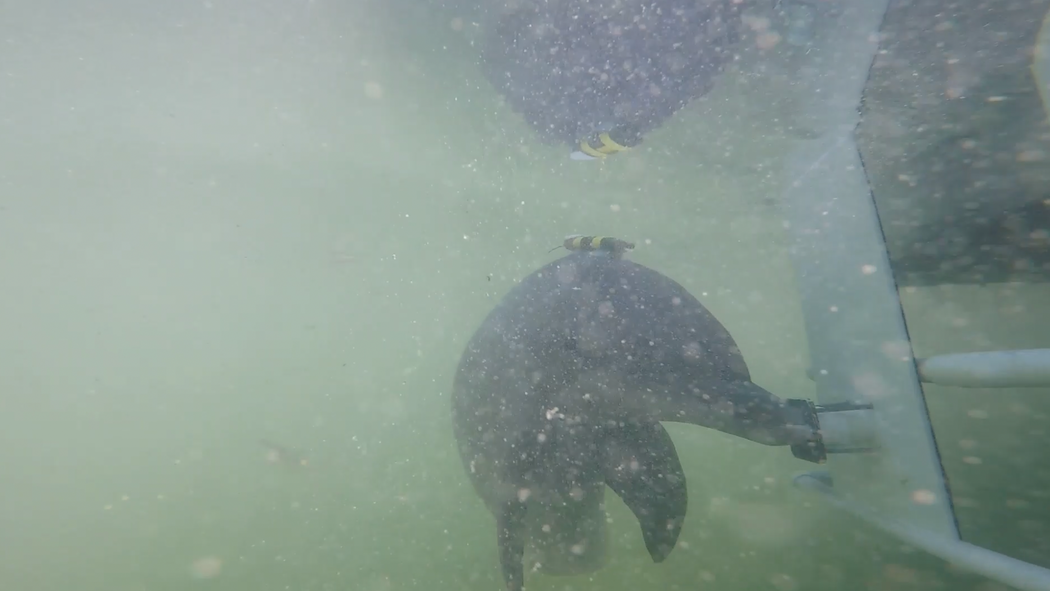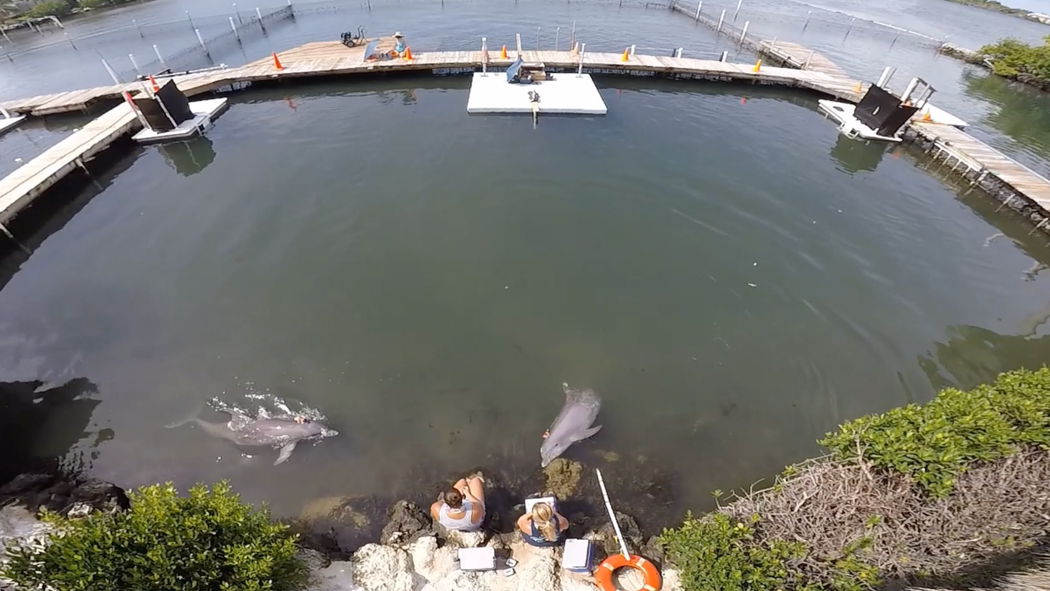
Researchers found that dolphins confronted with noise increase the volume and duration of their calls to one another but struggle to cooperate.

Mammals in the ocean swim through a world of sound. But in recent decades, humans have been cranking up the volume, blasting waters with noise from shipping, oil and gas exploration and military operations. New research suggests that such anthropogenic noise may make it harder for dolphins to communicate and work together.
When dolphins cooperated on a task in a noisy environment, the animals were not so different from city dwellers on land trying to be heard over a din of jackhammers and ambulance sirens. They yelled, calling louder and longer, researchers reported Thursday in the journal Current Biology. “Even then, there’s a dramatic increase in how often they fail to coordinate,” said Shane Gero, a whale biologist at Carleton University in Ottawa who wasn’t part of the work. The effect of increasing noise was “remarkably clear.”
Scientists worked with a dolphin duo, males named Delta and Reese, at an experimental lagoon at the Dolphin Research Center in the Florida Keys. The pair were trained to swim to different spots in their enclosure and push a button within one second of each other.
“They’ve always been the most motivated animals. They were really excited about doing the task,” said Pernille Sørensen, a biologist and Ph.D. candidate at the University of Bristol in England. The dolphins talked to each other using whistles and often whistled right before pressing the button, she said.

Ms. Sørensen’s team piped in sounds using underwater speakers. Tags, stuck behind the animals’ blowholes, captured what the dolphins heard and called to each other as well as their movements.
Through 200 trials with five different sound environments, the team observed how the dolphins changed their behavior to compensate for loud noise. The cetaceans turned their bodies toward each other and paid greater attention to each other’s location. At times, they nearly doubled the length of their calls and amplified their whistles, in a sense shouting, to be heard above cacophonies of white noise or a recording of a pressure washer.
The noisier it got, the less success the dolphins had with the task. At the loudest condition, they succeeded 62.5 percent of the time, simultaneously striking their buttons around 20 percent less than under ambient sound levels.
“It was surprising to see how much the success rate dropped,” Ms. Sørensen said.
Researchers in the past have observed wild dolphins changing their behavior when boats are around. For instance, scientists in Australian waters observed fewer dolphins, as the number of dolphin-watching tourist boats increased. But no one had yet investigated how anthropogenic sounds can muck up animals’ ability to cooperate.

“It’s usually really hard to do these kinds of studies in the wild,” said Mauricio Cantor, a behavioral ecologist at Oregon State University in Newport who wasn’t part of the study. But the experimental setup used by Ms. Sørensen’s team provided “clear evidence for the effect of noise,” he said, because the researchers could control for most everything that could interfere with their results.
Dolphins hunt together, using sound to communicate, and find their way through echolocation. They also use sound to stick together with their families and whistle to signal their presence to peers, Dr. Gero said. In noisy environments, “animals can’t talk to each other.” In the long run, Dr. Cantor said, such conditions could affect their food intake and ability to reproduce.
There may already be portions of the oceans that aren’t usable for these animals anymore, Dr. Gero said. Dolphins may migrate from places where they can’t communicate successfully. This phenomenon may already be occurring at major ports in places like Los Angeles or Boston, he said.
Ships are one of the main contributors to noisy ocean soundscapes, and in some spots, ships are slowed to protect wildlife from noise pollution, Dr. Gero said. For instance, along parts of the Pacific Coast from Washington State to Chile, boats are instructed to slow down or alter course to reduce noise that could bother marine mammals.
“We’re absolutely impacting animals in this way already,” Dr. Gero said. “The unfortunate reality is that, in some ways, this story is 35 to 50 years late.”
